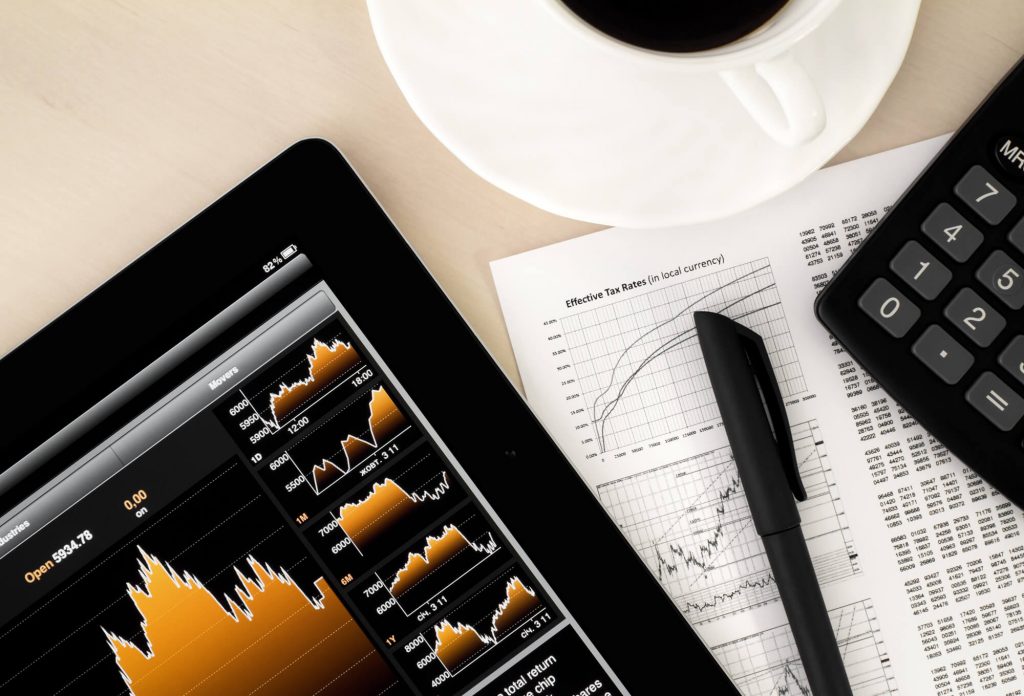
Anyone who invests in the stock market assumes some amount of risk. But if we’ve learned anything in the last couple of years, it’s that a safe harbor in the securities market can be hard to find.
We always encourage our readers to keep a diverse portfolio to maximize its potential. That means being sharp-eyed about stocks that could turn quick profits. But it also means keeping some long-term securities that produce dependable returns, especially in an up-and-down economy.
For the latter, many experts recommend keeping at least a few high-yield dividend stocks on hand. Investors have relied on these stocks for as long as the stock market has been in existence, whether to “ground” their portfolios with dependable securities or to realize some passive income. But are dividend stocks worth it?
Today, we’ll dive a little deeper into these tried-and-true ports in a storm, explore how to make money with dividends, and look at some of the best dividend stocks to buy for the long haul.

What Are Dividend Stocks?
When a public company makes money, it has two choices for what to do with the returns. One is to re-invest the capital into their operations — funding research and development, making improvements, acquiring new properties, and so forth.
The other option is to take at least a little portion of those earnings and redistribute them to stockholders, often in proportion to how many shares these investors own. These payouts are called dividends.
Issuing dividends is a direct way for a company to reward shareholders for their continued investment. After all, it’s always nice to get a check or a direct deposit every few months for doing nothing more than leaving one’s shares in a company.
Dividends also send impactful messages about a company’s profitability, stability, and potential. Investors view the highest dividend-paying stocks in the world as sure bets (well, surer bets) that will survive and thrive in times of overall financial stress. This makes investors want to buy more of their shares, which makes the companies’ share prices go up, which in turn increases the portfolio value of all concerned.
Companies issue dividends according to a set timetable. Most of the highest yield dividend stocks are paid out quarterly; however, a smaller number of companies issue them on an annual or semiannual basis.
What Can an Investor Do with Stock Dividends?
Investors have two options for what to do with the dividends they receive. Many simply reinvest the dividend back into the company in exchange for added shares. It’s an easy way to increase one’s exposure to the stock market without buying more shares manually.
But many investors opt to take the payouts in cash. Someone with a load of shares in a few of the best high dividend stocks can earn a surprisingly high amount of passive income. This in turn can be used to fund college tuition, pay into retirement accounts, save for big purchases, or just provide the means for dinner and a movie.
High-yield dividend stocks are especially profitable when investors hold onto them for a long time. If a young adult just entering the workforce starts a brokerage account, invests in a few dividend stocks, and walks away for, say, 30 or 40 years, they may wind up earning a shockingly high income just from the cash payouts.

How Much Do Dividends Pay?
The amount of dividend income an investor receives hinges on a few factors. Companies that issue dividends typically pay out between 2% and 5% of the total share value.
If you have $1,000 invested in a company that pays quarterly dividends of 3%, when they issue the next payout, you’ll get a whopping $30. As you probably expect, the more money you have invested in dividend-paying companies, the more you’ll get in returns.
We expect your next question is, “Hey, is it possible to earn a living income strictly from dividend payouts?” Sure, it is — but you have to have a lot of money invested.
Let’s say you hold stock in Coca-Cola. As of this writing, Coke’s share price is around $54 and the company pays out a dividend yield of 3.09%. If you set a goal of earning $60,000 — which isn’t bad for a single person with no dependents in certain areas — solely from Coke dividends, you’d have to have a lot of shares. To be exact, almost 36,000 shares, or just under $2 million invested in Coke.
Of course, as a retail investor, if you happened to have $2 million handy, you probably wouldn’t tie it all up in Coke. You’d want to spread it around several commodities, which all have different dividend yield rates.
While $2 million is out of reach for many investors, it’s not impossible. And if you have the more modest goal of producing supplemental income through dividends, even a portfolio worth $100,000 or so can produce meaningful results.
How to Invest in Dividend Stocks for Income
You can buy dividend stocks the traditional, individual way: by conducting research, finding the commodities that pay the most consistent dividends, and building your portfolio piece by piece.
Another strategy is to invest in a managed fund, like a mutual fund or exchange-traded fund (ETF), formed from several high-yield dividend stocks.
The beauty of dividend funds is that they only involve one transaction step — with a single purchase, you’ll suddenly own shares in multiple stocks, giving your portfolio immediate diversification.
Fund managers maintain their stock listings regularly, adding stocks that perform well and pruning those that don’t. With a diverse set of holdings, the stocks that are doing well will cover for those that are underperforming, so your dividend is as insured as it can be.
Your portfolio doesn’t have to be exclusive one way or the other. In fact, it’s an exceptionally good strategy to maintain ownership in a few dividend index funds and pick a few individual stocks as supplemental dividends. With proper research and a smart game plan, you’ll have a diverse lineup of reliable funds and your own stock picks that earn a higher dividend yield.
What Are the Best Dividend Stocks to Buy?
Here are some tips on how to find dividend stocks that will earn a steady, dependable income.
Hit Your Brokerage Site
Your online brokerage should make it quite easy to find dividend-yielding stocks. You can search for companies that issue dividends across a given range of percentages. If you prefer, you can use a stock screener that may offer more criteria to search against.
Compare Dividend Yields with Other Companies
Once you’ve found a stock you’re interested in, find its dividend-yield percentage and compare it with those of other companies. If it’s a high yield rate, it’s got to be a great investment opportunity, right?
Well — no, not necessarily. Companies that pay out double-digit percentages in dividend yields might not be wise choices because they may be in crisis. A high dividend yield is often a strong sign of looming financial trouble, while a more modest rate between 2% and 4% can mark a company that’s in much better shape.
A company with a dividend yield of 9% might look great compared to, say, Coca-Cola’s 3.09% yield. But if you go back and look at the company’s recent financial performance, you may see that the company’s annualized returns and share price aren’t so great.
Check the dividend yield, but don’t stop there. Yields higher than 4% should be questioned, and those higher than 10% should be investigated very heavily.
Evaluate Payout Ratio
For a better clue of how a dividend-yielding company is really doing, check out its payout ratio. This indicator reveals how much of its income the company allots for dividend payouts.
When a company pays out substantial chunks of its income as dividends — 75% or 80%, say — then it’s not spending that much reinvesting in itself, which it has to do to grow. Company execs may be fretting about its future or concerned that its upside is limited. Some companies’ payout ratios top 100%, which means it’s going into debt to issue dividends…not what you want to see.
Where to Start Finding Dividend Stocks
There are many resources for finding the best dividend stocks to invest in. Every quarter U.S. News & World Report updates a list of what they call “Dividend Aristocrats,” S&P 500 companies with long histories of dividend increases and that meet other strict screening requirements.
If you’re focusing on ETFs, Forbes offers a list of some of the top dividend funds in the market.
Wherever you find them, don’t stop at the analysts’ recommendation. Look hard at all of the dividend stocks and evaluate their performance history carefully. With proper and deliberate research, you’ll be able to build a solid portfolio of dividend stocks that will produce solid, dependable returns.

Gorilla Trades: Winning Stocks to Support the Blue Chips
Gorilla Trades can add another dimension to a dividend-heavy portfolio. Our proven stock-picking process has helped thousands of investors earn surprising and reliable income from some of the top up-and-coming stocks on the market. To find out more, sign up for a free trial.
